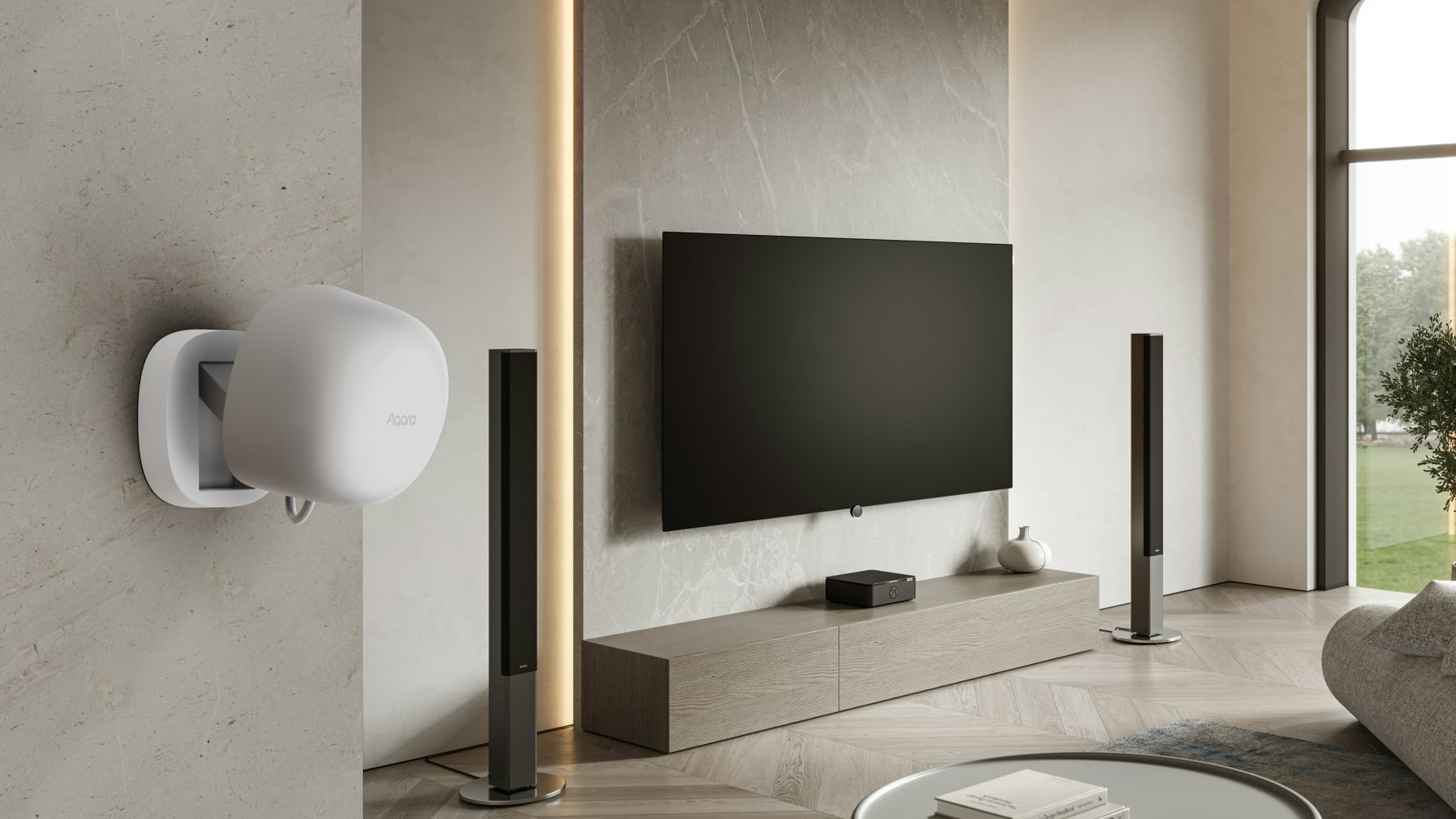
Aqara today introduced a new Presence Sensor that is designed to keep smart home products like lights turned on when someone is in the room. The Presence Sensor FP1E uses Zigbee, but it is able to connect to HomeKit and other smart home platforms through an Aqara Matter bridge.

The Presence Sensor FP1E uses millimeter wave technology to detect even minute human movements for prompt presence detection that can be used to trigger HomeKit automations. If you want to have a light come on in the laundry room when you go inside, for example, you need a HomeKit-compatible sensor.
A Presence Sensor differs from a motion detection sensor by continuing to recognize when someone is in the room, keeping the automation active. A standard motion sensor might turn on the lights, but will turn off on a timer rather than the continued presence of a person. The FP1E is able to determine that a person is in the room even when the person is sitting or lying still, plus it can recognize when a person leaves the room to trigger an automation to turn off the lights or other home product.
Aqara says that the new Presence Sensor is able to detect presence within a distance of up to 20 feet, and it can monitor a room that is up to 538 square feet in size if it is mounted on the ceiling. The sensor is able to distinguish human movement from pets and inanimate objects like curtains that might shift from the air conditioner.
The FP1E Presence Sensor joins Aqara's previous Presence Sensor FP2, which offers multi-person detection and zone-based automation triggers. The FP1E Presence Sensor is more affordable at $50, and it can be purchased from Amazon starting today.
Article Link: Aqara Launches New HomeKit-Compatible Presence Sensor
As an Amazon Associate, MacRumors earns a commission from qualifying purchases made through links in this post.